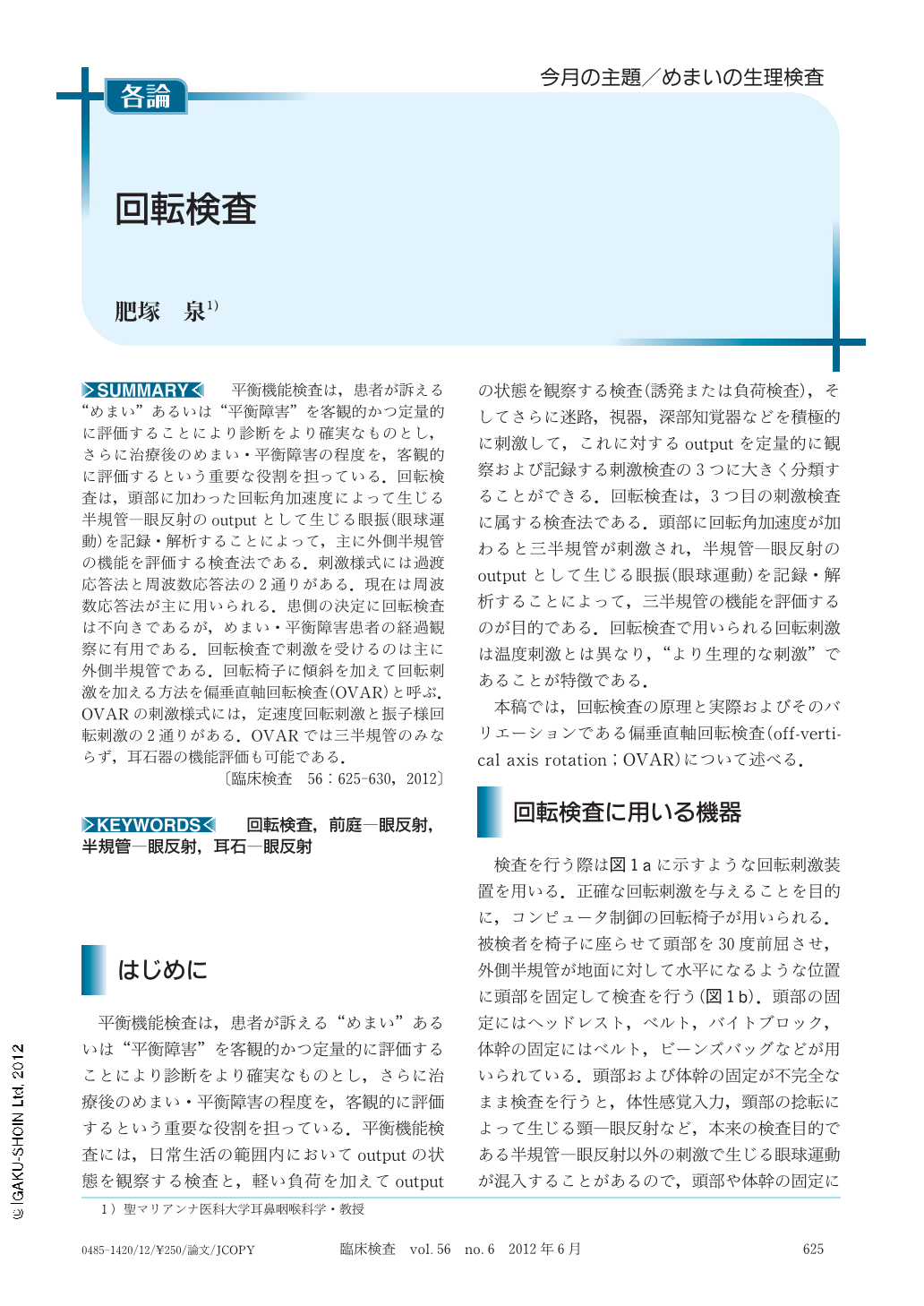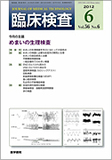Japanese
English
- 有料閲覧
- Abstract 文献概要
- 1ページ目 Look Inside
- 参考文献 Reference
平衡機能検査は,患者が訴える“めまい”あるいは“平衡障害”を客観的かつ定量的に評価することにより診断をより確実なものとし,さらに治療後のめまい・平衡障害の程度を,客観的に評価するという重要な役割を担っている.回転検査は,頭部に加わった回転角加速度によって生じる半規管―眼反射のoutputとして生じる眼振(眼球運動)を記録・解析することによって,主に外側半規管の機能を評価する検査法である.刺激様式には過渡応答法と周波数応答法の2通りがある.現在は周波数応答法が主に用いられる.患側の決定に回転検査は不向きであるが,めまい・平衡障害患者の経過観察に有用である.回転検査で刺激を受けるのは主に外側半規管である.回転椅子に傾斜を加えて回転刺激を加える方法を偏垂直軸回転検査(OVAR)と呼ぶ.OVARの刺激様式には,定速度回転刺激と振子様回転刺激の2通りがある.OVARでは三半規管のみならず,耳石器の機能評価も可能である.
The caloric test tests have been widely used to evaluate vestibular function. Nevertheless, the physical forces caused by the stimuli cannot readily be computed and for this reason the caloric tests have only very limited value in establishing the absolute sensitivity of the semicircular canal mechanism. With rotational tests, a different situation is encountered. Both horizontal semicircular canals are stimulated simultaneously ; hence deviations from normal responses are difficult to interpret in terms of disordered function of a particular horizontal semicircular canal. In contrast to caloric stimuli, the physical forces applied to the canals by rotational stimuli can be established with considerable precision. The VOR (vestibulo-ocular reflex) consists of the ScOR (semicircular-ocular reflex) and the OOR (otolith-ocular reflex). To test the ScOR, a caloric test and EVAR (earth vertical axis rotational) test are routinely used. However, for the OOR, there is no test in clinical use. OVAR (off-vertical axis rotation) is a stimulus wherein persons are rotated while the axis about which they are rotating is tilted with respect to gravity. Thus the OVAR can be used to assess the OOR. During constant velocity OVAR, only the otolith organs are stimulated, while during sinusoidal rotation, both the semicircular canals and otolith organs are stimulated. Sinusoidal OVAR produces less nausea than constant velocity OVAR and is thus appropriate for assessing otolith function clinically.

Copyright © 2012, Igaku-Shoin Ltd. All rights reserved.


